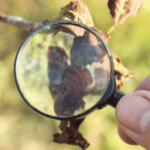The Benefits of Native Trees: Why Plant Native Trees?
Planting native trees is one of the best ways to enhance your landscape while supporting the local ecosystem. Native trees are adapted to the local climate and soil conditions, making them easier to maintain and more beneficial for the environment. Let’s explore the numerous advantages of planting native trees.
1. Attracting Wildlife: Native trees provide essential habitat and food sources for local wildlife. Birds, insects, and other animals rely on these trees for shelter and sustenance.
- Bird Habitat: Many native trees produce fruits and berries that attract birds, providing them with nourishment and nesting sites.
- Pollinator Support: Flowering native trees support pollinators such as bees and butterflies, which are crucial for the health of the ecosystem.
2. Easier Maintenance: Native trees are well-suited to the local environment, requiring less water, fertilizer, and pesticides compared to non-native species.
- Drought Tolerance: Native trees are adapted to local rainfall patterns and are more drought-tolerant, reducing the need for irrigation.
- Pest Resistance: These trees are naturally resistant to local pests and diseases, minimizing the need for chemical treatments.
3. Environmental Benefits: Planting native trees helps preserve the natural heritage of the area and contributes to environmental conservation.
- Soil Health: Native trees promote healthy soil by preventing erosion and improving soil structure with their root systems.
- Carbon Sequestration: Like all trees, native species absorb carbon dioxide, helping to mitigate climate change.
4. Aesthetic Value: Native trees enhance the beauty of your landscape with their unique shapes, colors, and textures.
- Seasonal Beauty: Many native trees offer stunning seasonal displays, from vibrant spring blossoms to colorful fall foliage.
- Diverse Landscaping: Using a variety of native trees can create a diverse and visually appealing landscape.
5. Cultural and Historical Significance: Native trees often have cultural and historical significance, representing the natural heritage of the region.
- Heritage Preservation: Planting native trees helps preserve the natural landscape that has been part of the region for centuries.
- Educational Opportunities: Native trees provide opportunities to learn about local ecology and the history of the area.
Examples of Native Trees for Florida:
- Live Oak (Quercus virginiana): A majestic tree known for its sprawling branches and resilience.
- Southern Magnolia (Magnolia grandiflora): Offers large, fragrant flowers and glossy green leaves.
- Bald Cypress (Taxodium distichum): Adaptable to wet conditions and provides excellent habitat for wildlife.
Conclusion: Planting native trees offers numerous benefits, from supporting local wildlife to reducing maintenance efforts. By incorporating native trees into your landscape, you can create a beautiful, sustainable, and environmentally friendly garden.
Call to Action: Contact Action Tree Care for expert advice on selecting and planting native trees. Enhance your landscape with the beauty and benefits of native species today!
Additional Resources: Read more about Our Tree Care Services. For more information on native trees and their benefits, visit Arbor Day Foundation.

